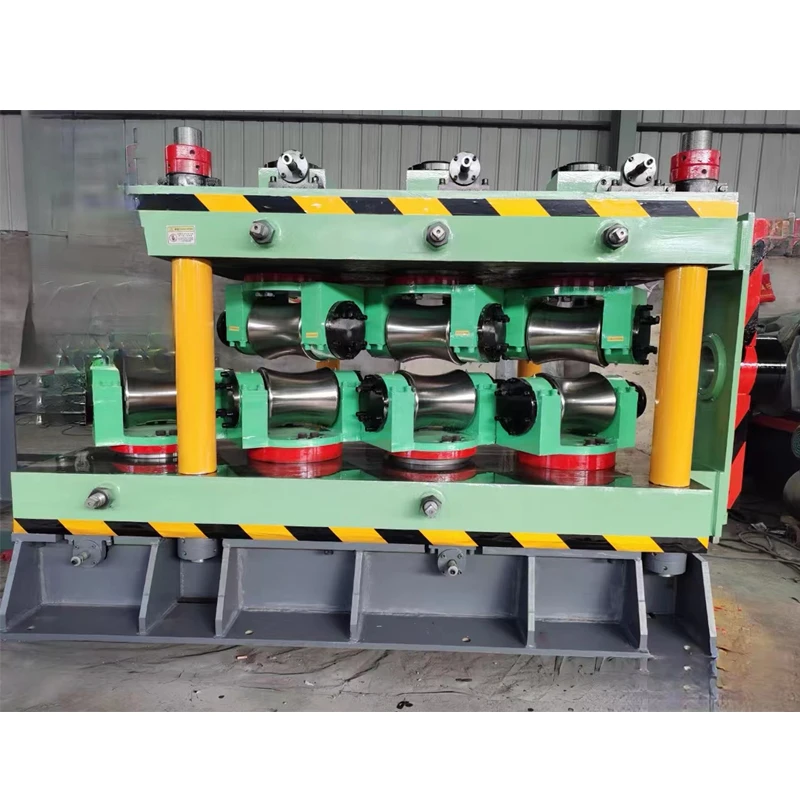Exploring the Benefits and Applications of Industrial Cold Saws in Modern Manufacturing
Understanding Industrial Cold Saw Technology
In the realm of metalworking and fabrication, precision and efficiency are paramount. One of the most effective tools in achieving these goals is the industrial cold saw. This technology has garnered attention across various industries, primarily due to its ability to produce clean, accurate cuts without generating excessive heat. In this article, we will delve into the mechanics of cold saws, their advantages, typical applications, and considerations for purchasing one.
What is an Industrial Cold Saw?
An industrial cold saw is a machine designed for cutting metal using a highly durable circular saw blade. Unlike traditional saws that often rely on friction to cut, cold saws leverage a process known as cold cutting. This implies that the cutting action generates minimal heat, significantly reducing the risk of metallurgical changes in the material being cut. The blades used in cold saws are typically made from high-speed steel (HSS) or carbide, with tooth geometries specifically designed for optimal performance based on the material and thickness being cut.
Advantages of Cold Saws
One of the most significant advantages of using an industrial cold saw is the superior cut quality
. Cold saws produce burr-free edges, ensuring a clean finish that often requires minimal or no secondary processing. This characteristic is particularly advantageous in applications where precision is crucial, such as in automotive components or aerospace manufacturing.Additionally, cold saws are known for their efficiency. The slow-speed cutting process allows for greater control and accuracy, which, in turn, leads to reduced waste material. This efficiency can translate into cost savings and increased productivity for manufacturing operations. Furthermore, the durability of the blades means that, with proper maintenance, they can withstand long periods of use, making them a worthwhile investment.
Another essential benefit is the safety aspect. The low temperatures generated during the cutting process reduce the risk of burns and injuries associated with high-heat cutting tools. Moreover, cold saws often integrate various safety features, such as blade guards and automatic shut-off mechanisms, enhancing workplace safety.
Common Applications
industrial cold saw

Industrial cold saws find applications across numerous industries. In the construction sector, they are frequently used for cutting structural steel and tubular products. The automotive industry utilizes cold saws for fabricating components such as chassis parts and transmission housings.
In the aerospace industry, the precision offered by cold saws is invaluable, as even the slightest deviation from specifications can have severe repercussions. Cold saws are also employed in metal service centers, where large quantities of different metals are cut to size for resale or further processing.
Considerations for Purchasing a Cold Saw
When considering the purchase of an industrial cold saw, several factors should be taken into account. First and foremost, evaluate the types of materials you’ll be cutting and their thicknesses. Different saw blades and machines are optimized for specific materials, including aluminum, stainless steel, and carbon steel.
The size and capacity of the saw are also crucial aspects. A larger saw may be required for bigger projects, while a more compact machine might suffice for smaller operations. Additionally, consider the advanced features that come with modern cold saws. Some models offer programmable controls for automatic cutting cycles, reducing operator fatigue and minimizing errors.
Finally, factor in maintenance and support. Reliable service and easy access to replacement parts are crucial for minimizing downtime, which is vital for maintaining productivity in a busy industrial environment.
Conclusion
In summary, industrial cold saws play an essential role in the metalworking industry, thanks to their efficiency, precision, and safety features. By understanding their benefits and applications, businesses can make informed decisions when investing in cutting technology. With the right cold saw, manufacturers can achieve higher levels of productivity while maintaining the quality standards necessary in today’s competitive market.
-
High Frequency Straight Seam Welded Pipe Production Line-BzZhou Xinghua Machinery Equipment Manufacturing Co., LTD.|Precision Welding, High EfficiencyNewsJul.30,2025
-
High Frequency Straight Seam Welded Pipe Production Line|BzZhou Xinghua|Precision Welding&EfficiencyNewsJul.30,2025
-
High Frequency Straight Seam Welded Pipe Production Line - BzZhou Xinghua|Precision Engineering&EfficiencyNewsJul.30,2025
-
High-Frequency Straight Seam Welded Pipe Production Line-BzZhou Xinghua Machinery Equipment Manufacturing Co., LTD.NewsJul.30,2025
-
High-Frequency Straight Seam Welded Pipe Production Line-BzZhou Xinghua Machinery Equipment Manufacturing Co., LTD.|Precision Manufacturing, High EfficiencyNewsJul.30,2025
-
High Frequency Straight Seam Welded Pipe Production Line-BzZhou Xinghua Machinery Equipment Manufacturing Co., LTD.|Precision Steel Pipe Manufacturing&Industrial EfficiencyNewsJul.29,2025


